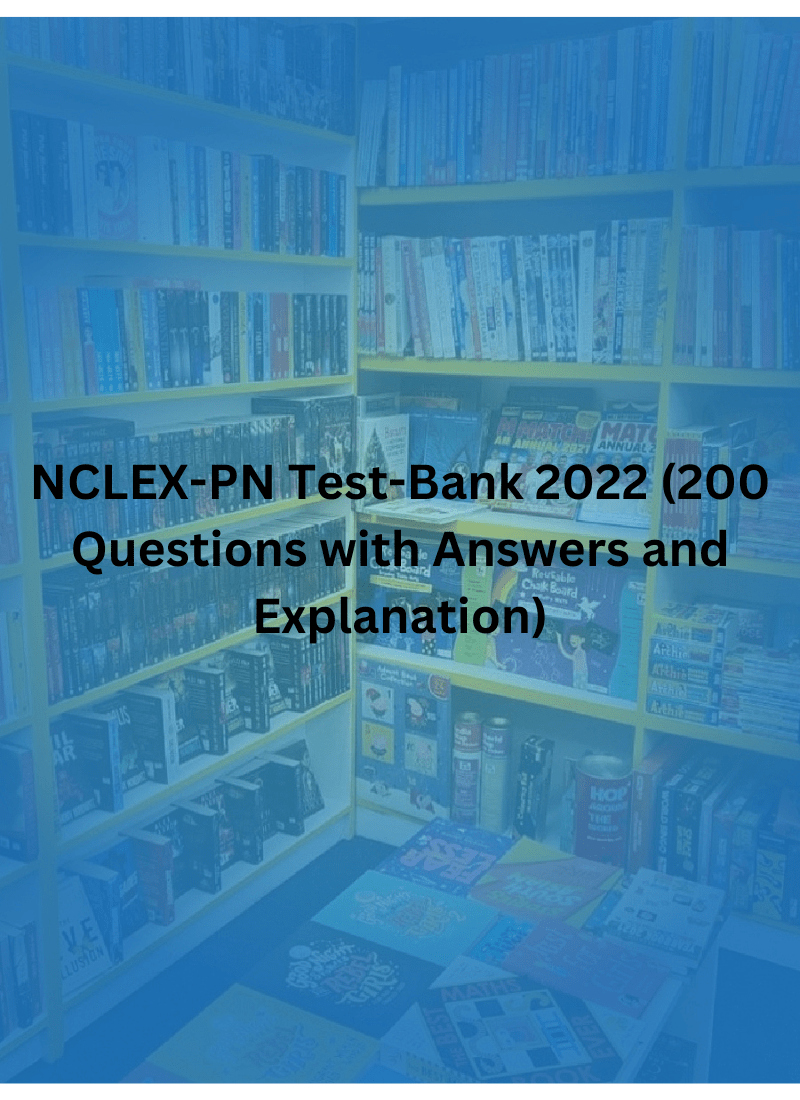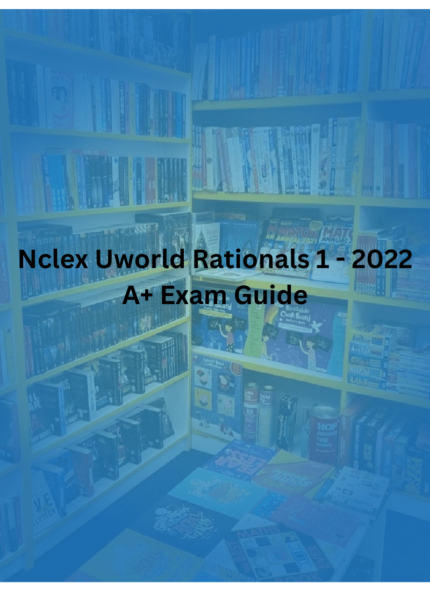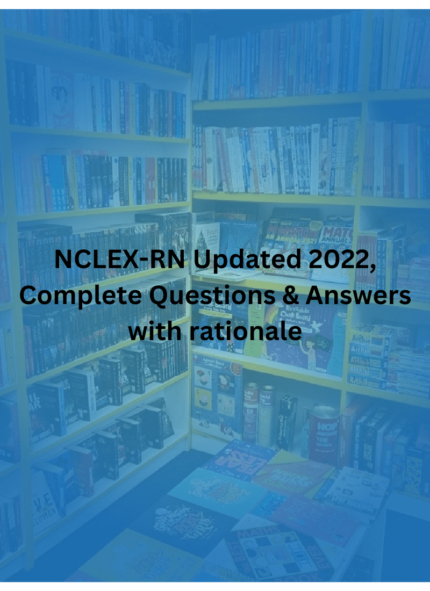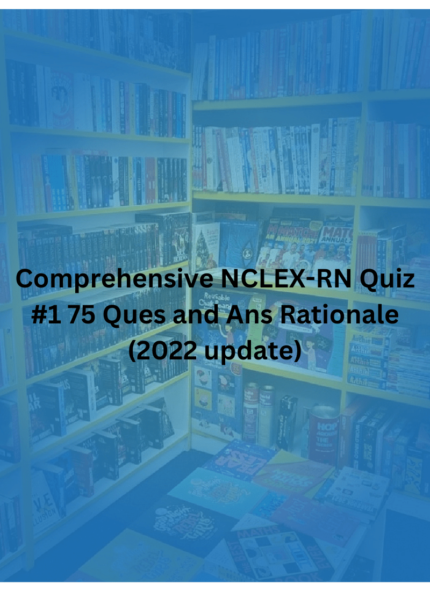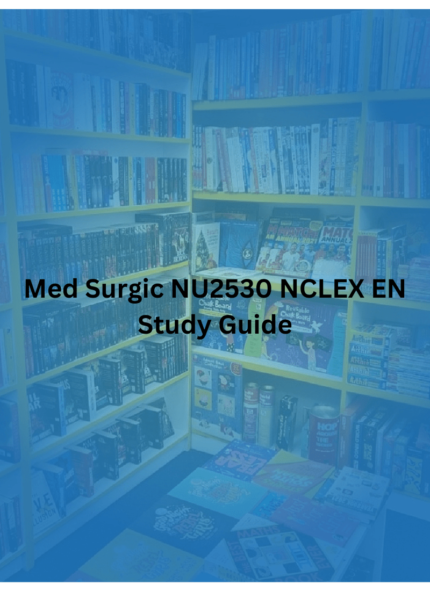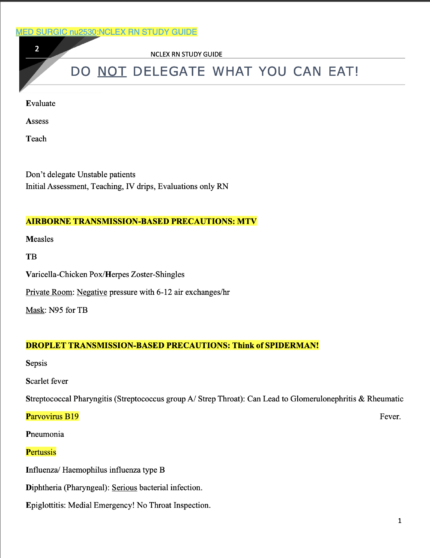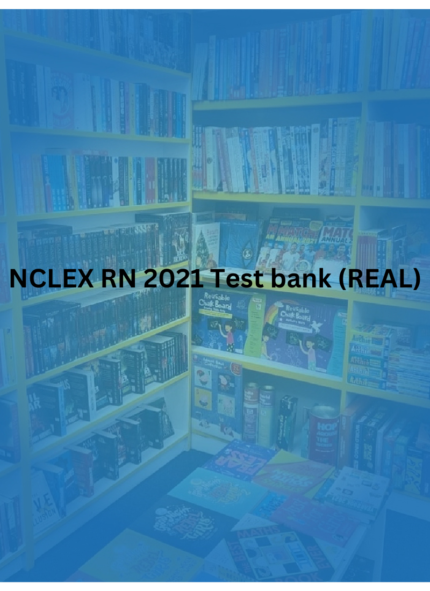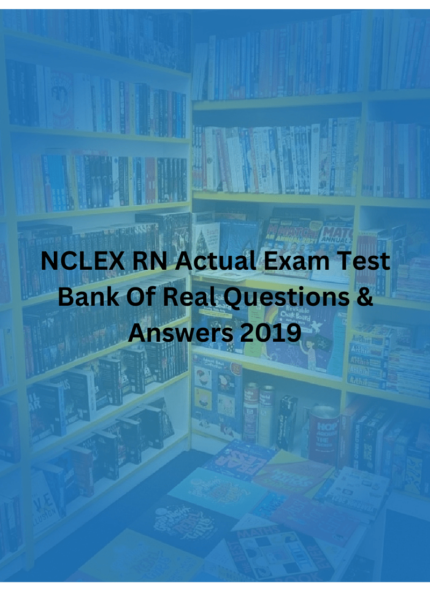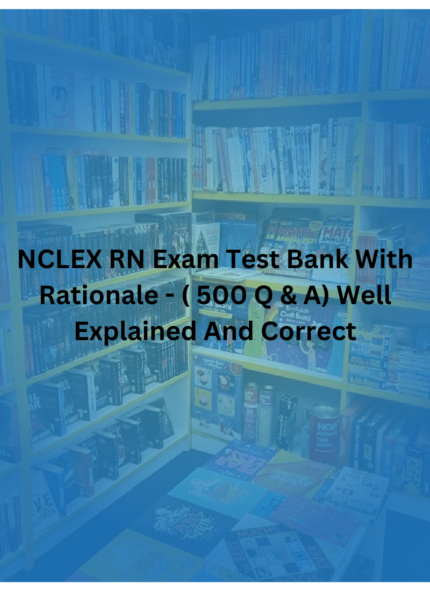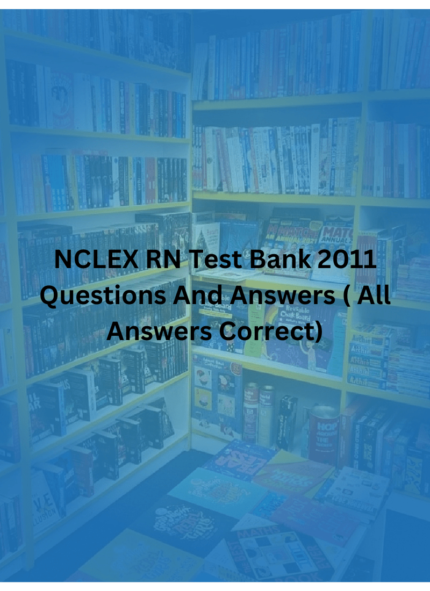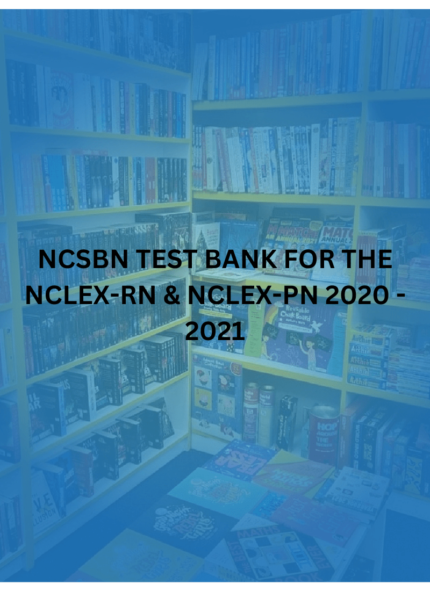NCLEX-PN Test-Bank 2022 (200 Questions with Answers and Explanation)
NCLEX-PN Test-Bank (200 Questions with Answers and Explanation)
1. The nurse is caring for a client scheduled for the removal of a pituitary tumor using the transsphenoidal approach. The nurse should be particularly alert for:
- Nasal congestion
- Abdominal tenderness
- Muscle tetany
- Oliguria
Answer A: Removal of the pituitary gland is usually done by a transsphenoidal approach, through the nose. Nasal congestion further interferes with the airway. Answers B, C, and D are not correct because they are not directly associated with the pituitary gland.
2. A client with cancer is admitted to the oncology unit. Stat lab values reveal Hgb 12.6, WBC 6500, K+ 1.9, uric acid 7.0, Na+ 136, and platelets 178,000. The nurse evaluates that the client is experiencing which of the following?
- Hypernatremia
- Hypokalemia
- Myelosuppression
- Leukocytosis
Answer B: Hypokalemia is evident from the lab values listed. The other laboratory findings are within normal limits, making answers A, C, and D
incorrect.
3. A 24-year-old female client is scheduled for surgery in the morning. Which of the following is the primary responsibility of the nurse?
- Taking the vital signs
- Obtaining the permit
- Explaining the procedure
- Checking the lab work
Answer A: The primary responsibility of the nurse is to take the vital signs before any surgery. The actions in answers B, C, and D are the responsibility of the doctor and, therefore, are incorrect for this question.
4. The nurse is working in the emergency room when a client arrives with severe burns of the left arm, hands, face, and neck. Which action should receive priority?
- Starting an IV
- Applying oxygen
- Obtaining blood gases
- Medicating the client for pain
Answer B: The client with burns to the neck needs airway assessment and supplemental oxygen, so applying oxygen is the priority. The next action should be to start an IV and medicate for pain, making answers A and C incorrect. Answer D, obtaining blood gases, is ordered by the doctor.
5. The nurse is visiting a home health client with osteoporosis. The client has a new prescription for alendronate (Fosamax). Which instruction should be given to the client?
- Rest in bed after taking the medication for at least 30 minutes
- Avoid rapid movements after taking the medication
- Take the medication with water only
D. Allow at least 1 hour between taking the medicine and taking other medications
Answer B: The client with burns to the neck needs airway assessment and supplemental oxygen, so applying oxygen is the priority. The next action should be to start an IV and medicate for pain, making answers A and C incorrect. Answer D, obtaining blood gases, is ordered by the doctor.
6. The nurse is making initial rounds on a client with a C5 fracture and Crutchfield tongs. Which equipment should be kept at the bedside?
- A pair of forceps
- A torque wrench
- A pair of wire cutters
- A screwdriver
Answer B: A torque wrench is kept at the bedside to tighten and loosen the screws of Crutchfield tongs. This wrench controls the amount of pressure that is placed on the screws. A pair of forceps, wire cutters, and a screwdriver, in answers A, C, and D, would not be used and, thus, are incorrect.
7. An infant weighs 7 pounds at birth. The expected weight by 1 year should
by:
- 10 pounds
- 12 pounds
- 18 pounds
- 21 pounds
Answer D: A birth weight of 7 pounds would indicate 21 pounds in 1 year, or triple his birth weight. Answers A, B, and C, therefore, are incorrect.

